If you follow my Instagram you’ll see that I spend most of my spider-watching time on the western waterfront. There’s an abundance of diverse spider habitats all along the Martin Goodman Trail, but there are several parks that are worth dedicated visits. Here’s a tour…
Humber Bay Park
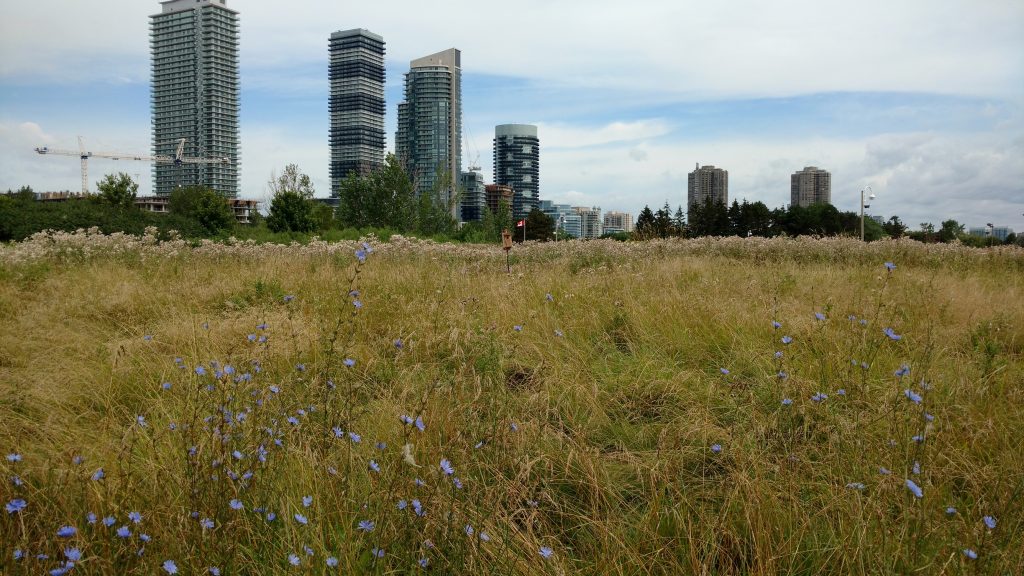
Amenities
☑ water source
☑ seating
☑ paved paths
☑ washrooms
☒ bike parking
☒ food
This park comprises two small blobby peninsulas just west of the Humber, with a variety of facilities for picnickers and boaters. The western peninsula is more groomed (paved trails, short lawns), so I generally stick to the east, where a loop of trail winds through meadows and bush.
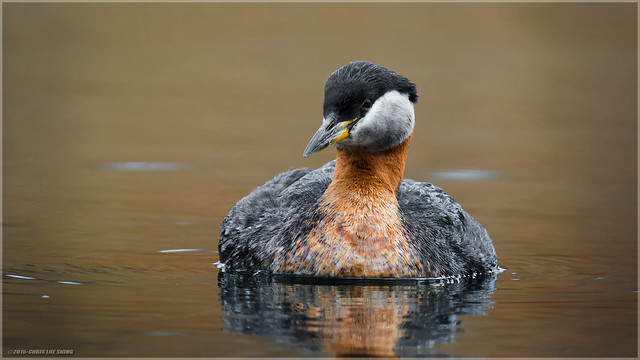
Image by Chris Lue Shing on Flickr. Because I can’t get a decent grebe photo to save my life.
On the way in, stop by the walkway across the reservoir. Slender diving birds called red-necked grebes nest there, sometimes attracting flocks of birders, especially when the grebes have chicks. It’s interesting to see how the other half lives.
This is an excellent place to spot the arabesque orbweaver, Neoscona arabesca. These gorgeous spiders spin classic round spiral webs, sheltering in rolled-up leaves or the like during the daytime. Their abdomens sport ornate spots and whorls in white, gold, burgundy, and olive. The males are leggier, with smaller abdomens and (at maturity) bulbous pedipalps. They’re very docile and most can be coaxed into posing for a photo.
Whenever I’ve been there, the entire ground has been swarming with ants. I have no idea what’s going on there, probably some kind of ant world war? Anyway, pay attention to them—not only to avoid bites, but because some of them aren’t ants at all, but ant-mimic jumping spiders! Ants recognize each other by chemical cues more than visual ones, so the spiders have probably taken on this guise to fool predators rather than prey. I don’t have many photos of these; they move so fast that most come out as blurs!
Keep an eye out for jumping spiders scaling the tall grass stems. On my last visit I found a lovely peppered jumper, Pelegrina galathea, which I first spotted earlier this year on the West Toronto Railpath. Salticus and Phidippus are also common.
The trail comes out at the beach on the west side. It used to be one of my favourite beaches—the water is cleaner than at Sunnyside, and while most of the beach is rocky, there were a few sandy spots sheltered by trees. To my horror I found that the sandy part of the beach has been entirely washed away by this year’s floods, eroded almost all the way up to the trail. The shady spot where I sat and read Annihilation one afternoon is now underwater. I don’t know how much can be restored.
Humber Bay Shores Park
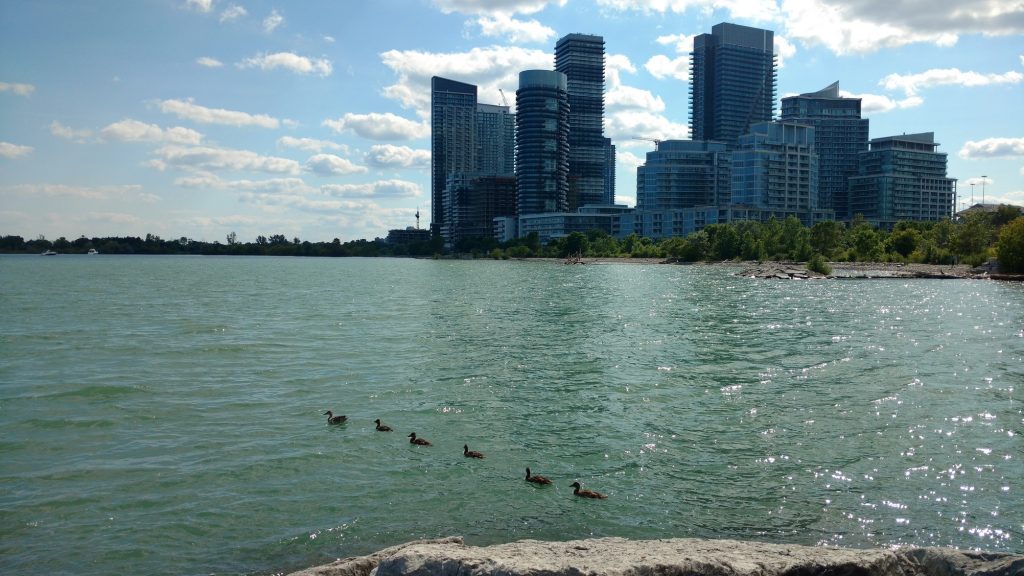
Amenities
☒ water source
☑ seating
☒ paved paths
☒ washrooms
☑ bike parking*
☑ food*
☑ noxious weeds**
* Note: the park itself doesn’t have many amenities. However, the condo complex right across the street has bike parking, convenience stores, cafés, and restaurants.
** Warning: the beach and woods are gradually being overtaken by wild parsnip, an invasive plant that can cause burning and blistering from skin contact. Would definitely recommend covering up as much as possible for the walk to the beach.

The beach spiders are all thin-legged wolf spiders in genus Pardosa, but I’m not sure if they belong to different species or are just variations within one. There are a few variants.
All have the distinctive spiky legs of Pardosa—the spikes are hairs called setae. The big pair of posterior median (front-and-centre) eyes, a hallmark of wolf spiders, are spaced slightly farther apart than others’, and it gives them a kind of innocent “wide-eyed” demeanour rather than, say, the mournful face of Hogna. They don’t get very big; at their largest they have a legspan of maybe an inch.
You can see all kinds of interesting behaviour, like females toting their bluish-green egg sacs and, later, carrying the spiderlings on their abdomens. (From a distance the tell is a slightly more spherical-looking abdomen.) Thirsty males use a particular shuddering gait to approach big, queenly females, who usually just chase them off and go back to sunning themselves on logs. A wave will splash one spider’s hiding place, causing it to dart under another rock and displacing the previous occupant in turn, so there is a constant turn-over.
These spiders are extremely shy and sensitive to the slightest vibration, and they literally have eyes in the back of their heads. They vanish at a footstep or a wave of one’s arm. If you can manage to corner one at all, they just freeze. I’ve never had one attack me (or the camera), or even adopt the universal spider defensive posture. Park visitors (who have occasionally asked me “What are you looking for?”) are very surprised if not particularly happy to learn that they’re surrounded by millions of these beautiful, vigilant little hunters.
Trillium Park
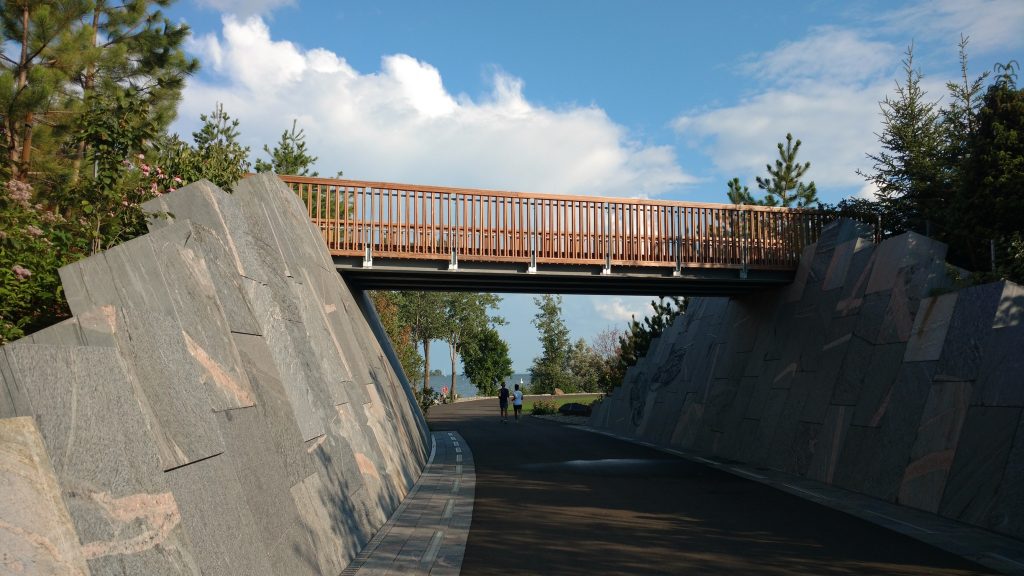
Amenities
☑ water source
☑ seating
☑ paved paths
☑ washrooms
☑ bike parking
☑ food
This park, built on the site of an old parking lot on the western side of the old Ontario Place grounds, only just opened earlier this year, seemingly part of the cavalcade of populist pre-election generosity from the Liberals. It’s all very shiny and new: the washrooms and water fountains aren’t totally disgusting, the log fence posts are golden and unweathered, the native wildflowers and shrubs look freshly planted. A couple of plain sturdy bike racks have been installed by the park entrance, in the corner of the massive parking lot, and there are a few more behind the big rock at the entrance and placed beside benches throughout the park. (They could replace two parking spaces with bike racks and double the existing bike parking.)
There’s also a small café out of a cargo container at the edge of the park, where it connects to the rest of Ontario Place—they sell tea, coffee, snacks, etc.
Anyway, you’ll be happy to know that the place is already swarming with spiders. The large stone blocks that line the shore are an excellent habitat for wolf spiders and grass spiders. Check underneath flower petals for mesh-web weavers or crab spiders. Orbweavers make webs between the fences; you may see long-jawed orbweavers camouflaging themselves by narrowing their long, skinny bodies against the fence wires.
While the main path is paved, there are many places where you can go “off-trail” and ramble around in the rocks or bushes. There is also a good mix of “natural” and man-made features, which each attract different kinds of creatures. I look forward to seeing what can be found in the park in fall and winter!
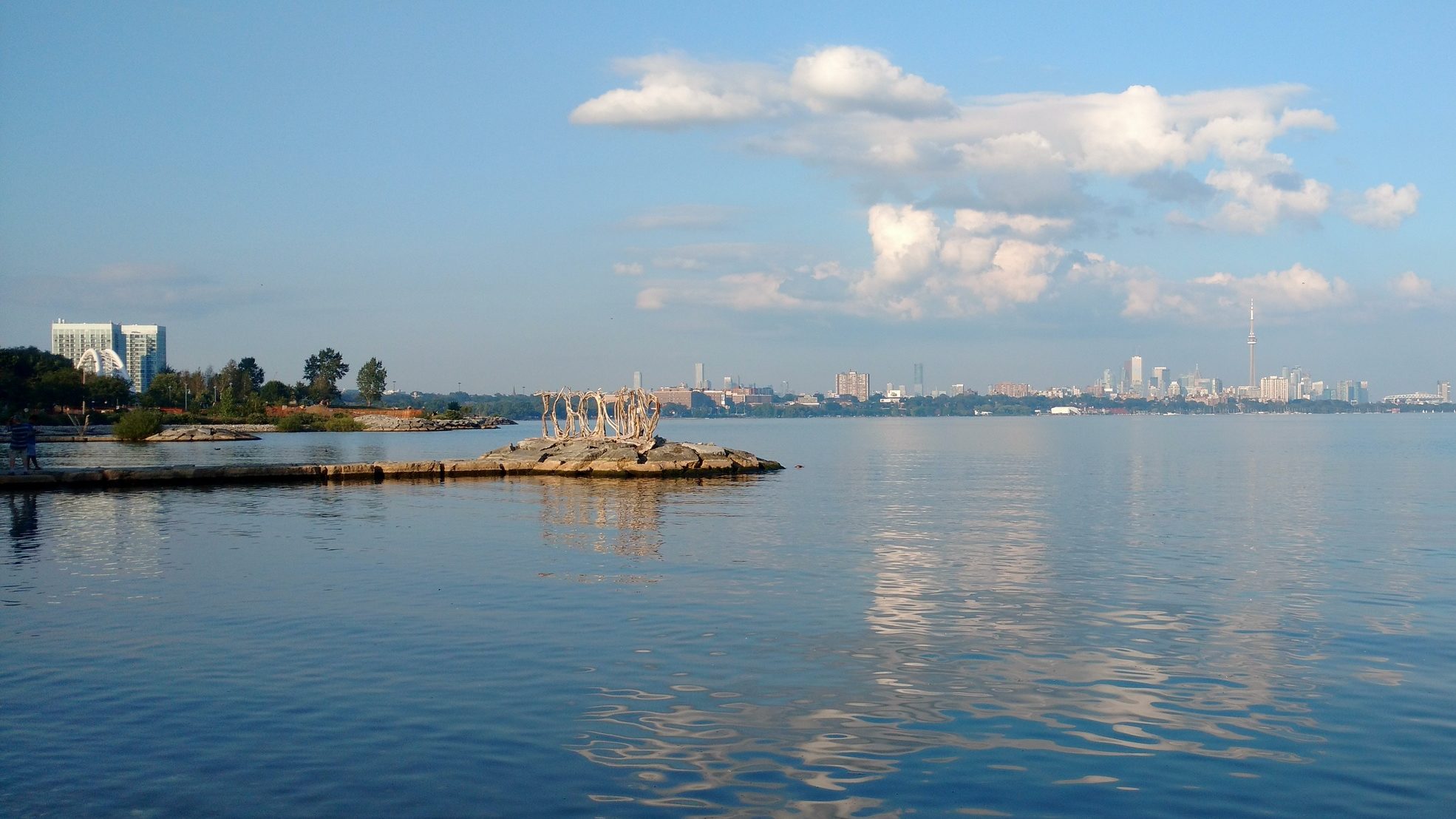
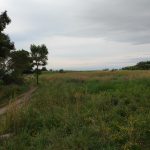
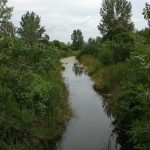
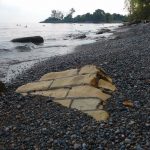
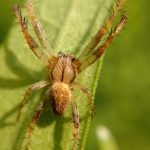
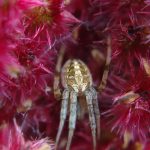
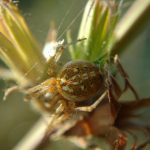
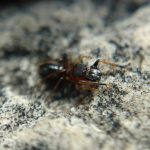
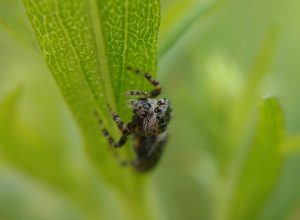

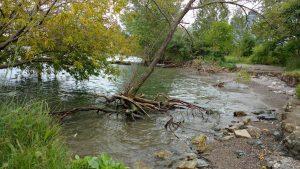
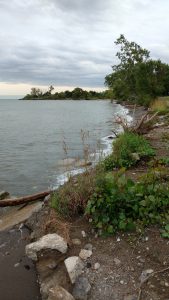
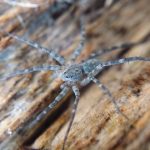
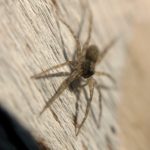
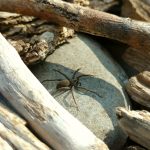
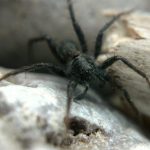

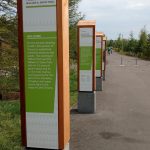
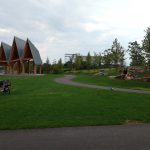


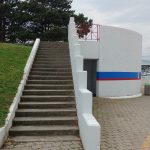
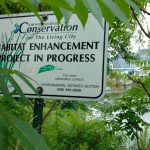
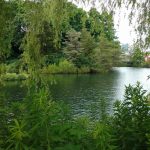
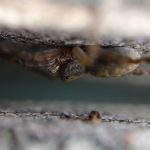
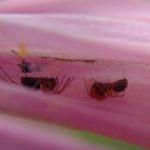
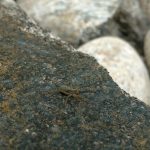
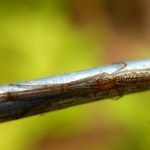
One thought on “Spiders of the Western Waterfront”